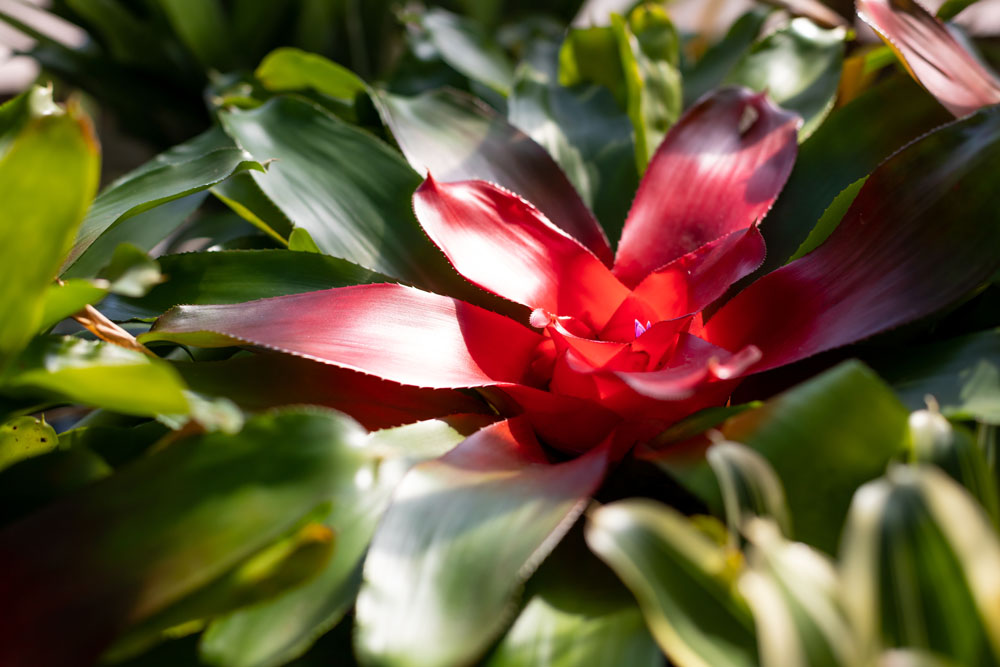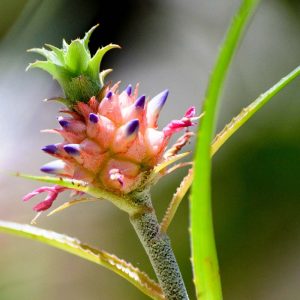Description
Neoregelia – Aregelia –
There are about 100 species of sometimes rhizomatous or stoloniferous epiphytic or terrestrial perennials (bromeliads) in this genus. They occur from coast scrub, woodland, and rainforest, to 5,000′ feet high, in South America. Some are grown for their striking coloration of their central leaves and bracts when flowering. The variable, usually spiny edged, green to maroon, striped, spotted or marbled leaves are borne in rosettes, large sheath totally enclose the scape and its bracts. An umbel like, sometimes raceme or corymb-like, compact inflorescene nestles in the heart of each leaf rosette and, in summer, bears numerous long lasting, tubular flowers. Offsets from around the flowering rosettes. Grow as a houseplant.
Indoors, grow in epiphytic or terrestrial bromeliad potting mix in bright filtered light. When in growth, water freely. Apply a low nitrogen liquid fertilizer monthly from spring to late autumn. Keep rosette cups filled with water from spring to early autumn. Water sparingly in winter. Sever spent leaf rosettes at the bases.
Prone to scale insects, mealybugs, bacterial soft rot, leaf spot, and a variety of fugal leaf spots.
N. carolinae – Aregelia carolinae – Nidularium carolinae – Blushing Bromeliad – Heart of Flame – This epiphytic bromeliad from Brazil is the most widely grown, and grows 8-12″ tall and 15-24″ wide. It has open rosettes of 12-20 strap shaped, toothed, copper suffused, light olive green leaves, 16-24″ long, at flowering time, the central leaves turn crimson. Red bracts surround violet-purple to lavender-blue flowers, to 1 ½” long, which are produced in summer.
Zones 13-15





